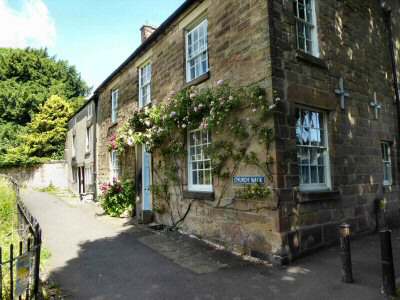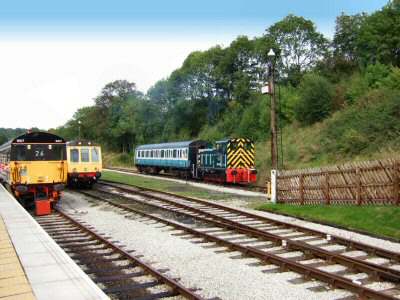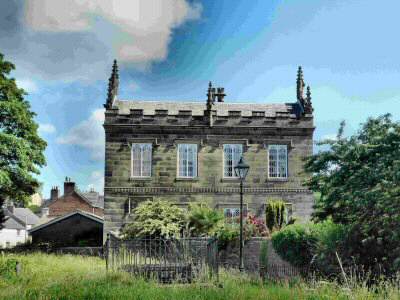WIRKSWORTH
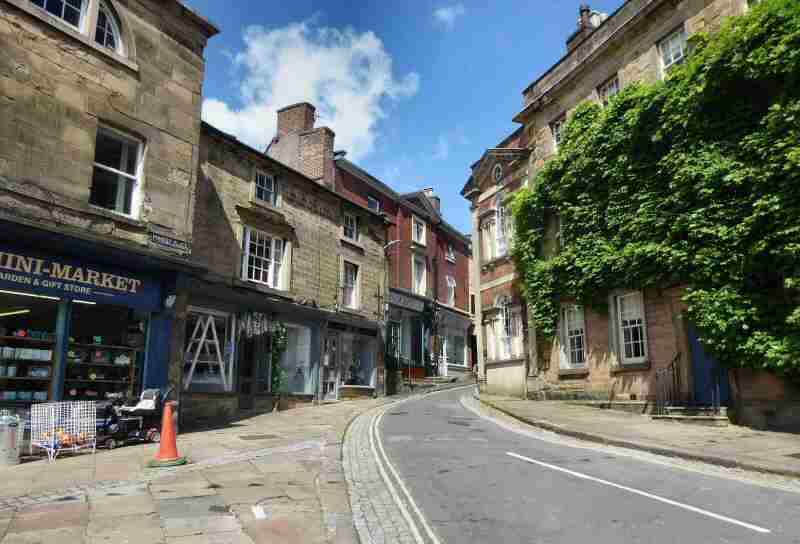
PLAN YOUR DAY OUT
Location: On the B5023 road, which leaves the A6 at Duffield and rejoins it again at Cromford. (SK286540)
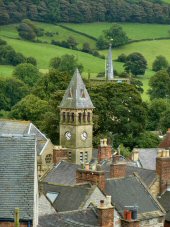
Visit: Ecclesbourne Valley Railway runs from Wirksworth to Duffield, with a short extension to Ravenstor. It is Derbyshire’s longest heritage railway line. – The National Stone Centre tells the story of stone and its geological and industrial history. Outside the visitor centre, the quarry trail takes you back over three hundred million years. There is a large café where you can sit inside or outside with splendid views over Wirksworth. – The Parish Church of St Mary the Virgin stands at the junction of at least five ancient trackways. The church dates back to about 653 and is completely encircled by a path around the churchyard, which gives it a cathedral-like appearance. The ‘Wirksworth Stone’ inside the church has been described as ‘one of our greatest archaeological treasures’.
Refreshments: The town has many cafés, pubs, and restaurants to suit all tastes.
Walk: Beautiful scenery, abundant wildlife, and world-renowned heritage make the Cromford and High Peak Junction Walk very special. The Derwent Valley was awarded World Heritage Status in 2001. Leave time for a visit to the Arkwright complex to discover how Cromford became known as the ‘Cradle of the Industrial Revolution’.

Special Places of Interest in the Locality: Arkwright’s Mill at Cromford Visitor Centre at Building 17 of the 15-mile-long Derwent Valley Mills World Heritage Site. It allows you to explore all the key heritage and wildlife sites using interactive touch screens. The exhibition continues with the story of the Derwent Valley’s global impact on the cotton industry, where the mill comes to life as part of the Arkwright Experience. – Carsington Water, officially opened by HM the Queen in 1992, instantly became one of Derbyshire’s most important tourist attractions. Only a short, easy walk from the Visitor Centre car park is the wildlife centre, where you can watch Carsington’s birdlife in warmth and comfort. Posters on the wall help identify the birds spotted for those who are not experts. – Climb Black Rocks the easy or hard way to get a splendid view of the surrounding area. Extend your visit by walking up the High Peak Trail, passing Steeple Grange Light Railway and the National Stone Centre on the way to Middleton Top, where the Engine House contains a beam engine once used to raise and lower wagons up the incline.
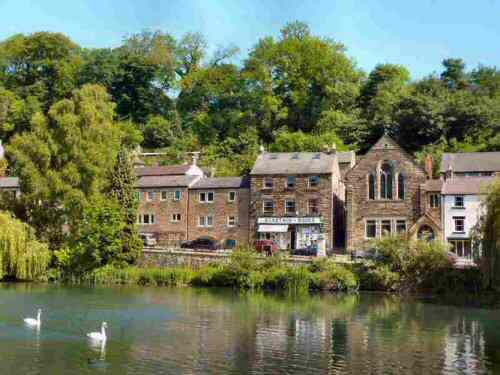
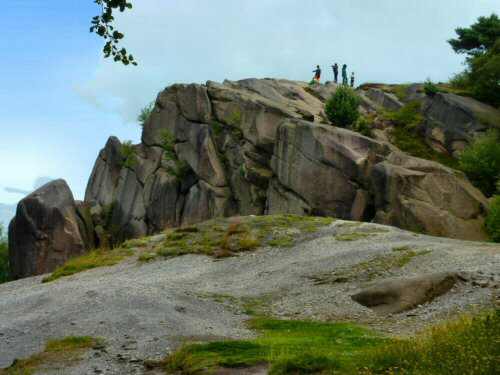
INTRODUCTION
The small town of Wirksworth may not make much impact on the busy traveller driving through. But visitors who have time to explore the narrow streets and maze of intriguing alleyways, admire the old buildings and lovely views, and visit the ancient church and cathedral-like close will soon fall in love with this fascinating old town.
It was the centre of the English lead mining industry at its height and stands virtually at the centre of Derbyshire, about two miles south of the Peak District National Park boundary. Lead was the basis of Wirksworth’s past prosperity, and lead mining in the area goes back to Roman times. The Barmote Court was set up in 1288 to enforce lead mining laws, which, it was said even then, were of great antiquity. It is almost certainly the oldest industrial court in Britain and possibly the world, and still sits once a year at Moot Hall in Chapel Lane on a ceremonial basis.
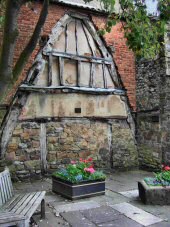
LEAD MINING
Between 1600 and 1780, lead mining peaked before finally declining during the latter part of the 19th century. When miners were forced deeper and deeper for the ore, flooding problems became even more severe, making extraction uneconomic. The discovery of rich deposits of easily accessible lead ore at Broken Hill in Australia forced prices down even further, resulting in the closure of many mines.
As lead mining declined, the limestone quarries provided work for people there. The arrival of the railway in Wirksworth in 1867 linked the town with Derby and the rapidly expanding railway network beyond. It opened the way for the easy distribution of limestone, which was in great demand. The situation improved 12 years later with the opening of a railway tunnel below the town centre linking Dale Quarry, known locally as the ‘Big Hole’, with the station.
The great upheaval came in 1925-26 with the re-opening of Dale Quarry. Mechanisation was introduced, and a stone crusher was installed in a hole between two hundred and three hundred feet deep. Inevitably, this densely populated area declined, and the town was severely affected by dust, dirt and noise.
Many people who could afford to do so reluctantly left, along with business and commerce. Buildings fell into disrepair, frequently being left empty to decay. And what had been one of Derbyshire’s most important towns was left blighted with the residents who remained despairing that improvements would ever occur.
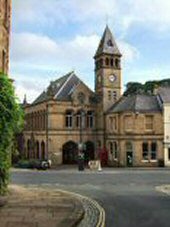
REGENERATION
Help was at hand when Derbyshire Historic Buildings Trust discovered an anonymous charity, which, after a lengthy selection and negotiation process, chose Wirksworth for financial support. In November 1978, a public meeting was called at Wirksworth Town Hall to discuss the proposals for the town’s regeneration. The meeting was overwhelmingly in favour of the proposals, and the Wirksworth Project was launched.
At first, progress was slow, but after what seemed an age, the realisation of the dramatic improvement became fully apparent. National and international recognition followed. In June 1983, Wirksworth was awarded the prestigious Europa Nostra Award for architectural conservation. It was the only award made to a United Kingdom project then. It was awarded for its ‘exemplary regeneration of a small county town, through a broad programme of self-help and innovative features’. Praise came from many other quarters, and HRH Prince Charles referred to the project as ‘brilliantly imaginative’.
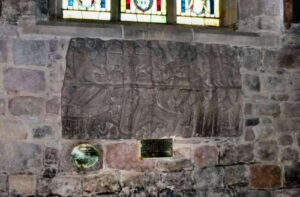
THE PARISH CHURCH OF ST. MARY THE VIRGIN
The Parish Church of St Mary the Virgin stands at the junction of at least five ancient trackways. It was one of the first centres of Christian teaching and may have been built on a prehistoric stone circle site. The church dates back to about 653 and is completely encircled by a path around the churchyard, which gives it a cathedral-like appearance. The ‘Wirksworth Stone’ inside the church has been described as ‘one of our greatest archaeological treasures’.
THE DALE AND GREEN HILL
The limestone cottages of The Dale and Green Hill cling to the hillside as if Wirksworth were some little Cornish fishing village with nothing but the sea missing. In places, it is possible to walk from the garden of one property onto the roof of another below. This is the area where the lead miners used to live. The jumble of small cottages was primarily built of random stone extracted from nearby quarries. Nowhere is the lack of planning more apparent than in the area between the remains of Dale Quarry and Middle Peak Quarry, known locally as Puzzle Gardens.
The cottages are linked by a maze of ‘ginnels’ or ‘jitties’; there is no room for vehicular access, and it is a nightmare for any new postman. Halfway up Green Hill is Babington House, which was once used as a hospital. It is an excellent example of the old builders’ rule, ‘Always use local products if they are available’. The builder, having quarried the stone from the back garden. At the foot of Green Hill stands Hopkinson’s House, restored from dereliction by the ‘Wirksworth Project’.
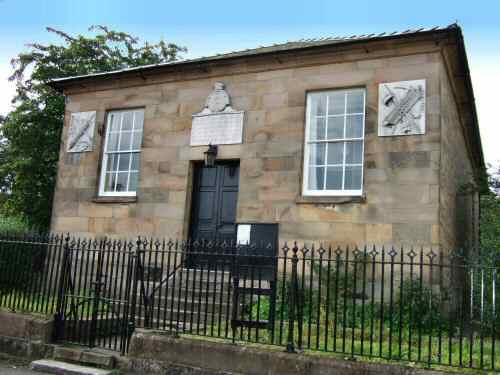
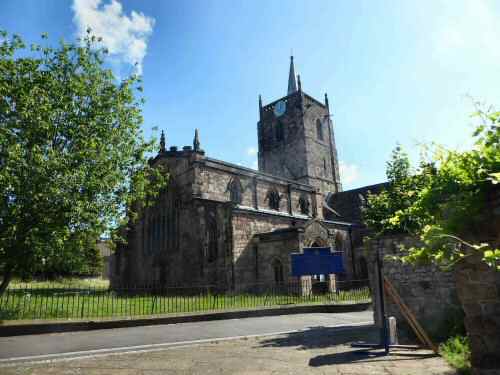
TEN FASCINATING FACTS ABOUT WIRKSWORTH
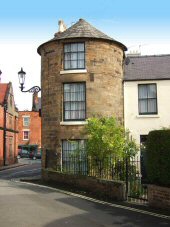
1. Wirksworth is fast becoming an important tourist centre with historic streets and alleyways. Its many delightful old buildings and views of distant green hills all add to its charm.
2. Following the restoration of the Ecclesbourne Valley Railway, the line runs from Wirksworth to Duffield through gorgeous countryside. A further short section of the line heads northwards to Ravenstor.
3. On the Sunday nearest 8 September, the ancient custom of clypping is still observed when the congregation joins hands in thanksgiving to encircle the church.
4. Look for the much-admired carved figure of a lead miner with his pick and kibble on the church’s west wall.
5. Adam Bede’s cottage stands at the southern end of Wirksworth, where Samuel Evans and his wife, Elizabeth, once lived. In George Eliot’s famous novel Adam Bede, they are portrayed as Adam Bede and Dinah Morris.
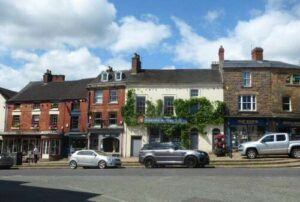
6. The Chemist’s Shop in the marketplace was established in 1756, and the double bow-fronted windows are believed to be the originals. It is one of the oldest practising pharmacies in the country.
7. The Old Lock Up, now a luxury Guest House, was a police station for 100 years. DH Lawrence and his German-born wife Frieda, who was listed as an alien, had to report there once a week during the First World War when they lived at Middleton-by-Wirksworth.
8. The National Stone Centre tells the story of stone and its geological and industrial history. Outside the visitor centre, the quarry trail takes you back over three hundred million years.
9. In the 19th century, the former North End Mills and four other mills in Wirksworth manufactured 800 miles of ‘Red Tape’ each week.
10. Richard Block moved to Middleton-by-Wirksworth in 1999 before spending the last 15 years of his life in Wirksworth. He co-founded a DIY company with his brother-in-law David Quayle, which soon became known as B&Q, a name it still bears.
Cromford and High Peak Junction Walk
